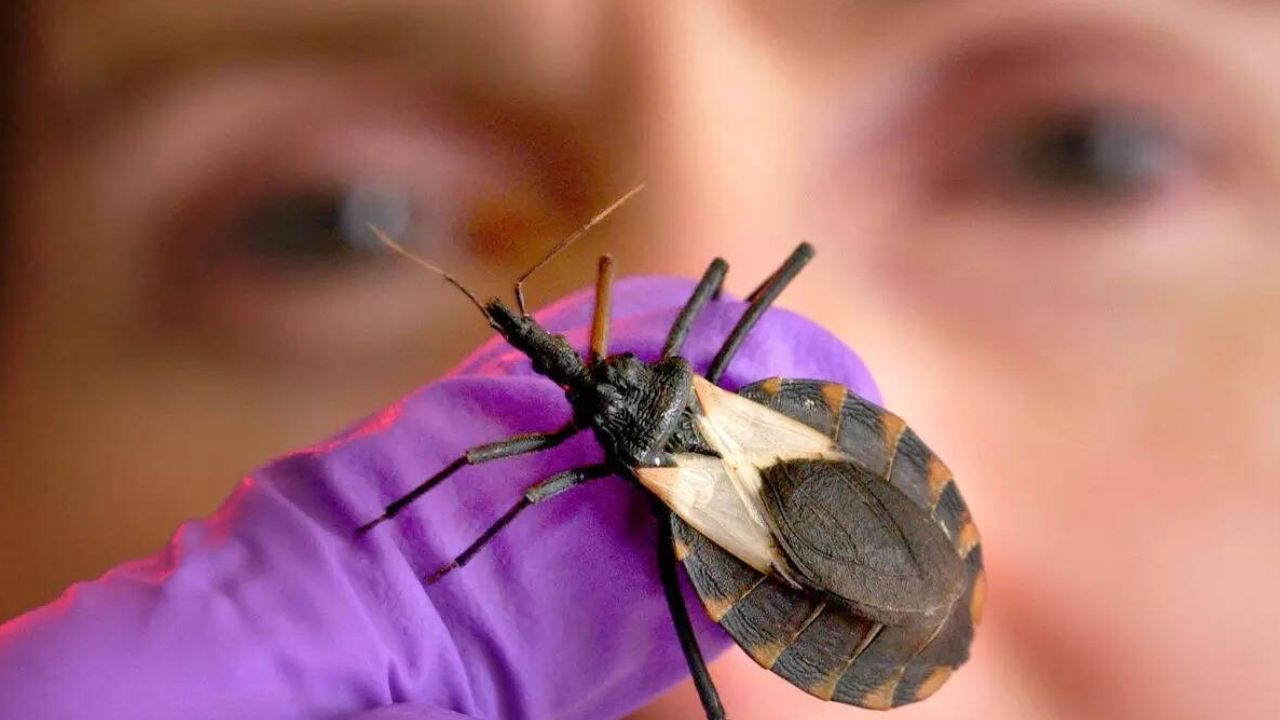Chagas Disease Spread in the U.S.: What You Need to Know About the Deadly ‘Kissing Bug’ Illness
United States – Chagas disease, a potentially deadly condition caused by the triatomine insect—commonly known as the “kissing bug”—is increasingly becoming a health concern across the United States. Once thought to be confined mainly to parts of Latin America, new reports indicate that this disease may be endemic in multiple U.S. states, challenging earlier assumptions and highlighting the urgent need for increased awareness and preventive measures.
According to a recent report by the Centers for Disease Control and Prevention (CDC) published in the September issue of the Emerging Infectious Diseases journal, human cases of Chagas disease have been reported in eight U.S. states, with Texas being the most affected. The insect itself has been observed in 32 states, signaling a growing presence nationwide.
Emerging Threat: The Growing Presence of Chagas Disease in the U.S.
Previously categorized as a non-endemic disease in the United States, Chagas disease is now challenging that classification. The CDC report highlights that “Autochthonous (locally acquired) human cases have been reported in 8 states, most notably in Texas.” Other states with reported cases include California, Arizona, Tennessee, Louisiana, Missouri, Mississippi, and Arkansas.
While data remains inadequate to prove a definitive increase in the distribution or population of the triatomine insects, the bugs are becoming increasingly recognized due to more frequent interactions with humans and increased research attention. Their tendency to invade homes, bite humans, and cause allergic reactions, coupled with a rise in canine diagnoses, has raised public awareness.
“Labeling the United States as non-Chagas disease-endemic perpetuates low awareness and underreporting,” the CDC report emphasized, underscoring the importance of recognizing local transmission risks.
Understanding Chagas Disease: Causes and Transmission
Chagas disease is caused by the Trypanosoma cruzi parasite, which is transmitted by the triatomine insect or “kissing bug.” The nickname stems from the bug’s tendency to bite people on the face, often around the mouth and eyes.
According to UCLA Health, and confirmed by CDC data, roughly 8 million people worldwide and about 280,000 in the United States are believed to have Chagas disease, many unknowingly. The parasite is passed to humans when they unknowingly rub bug feces containing the parasite into bite wounds, or mucous membranes such as the eyes or mouth.
The disease does not spread from person to person through casual contact or respiratory droplets like a cold, making vector control essential.
Recognizing Symptoms: From Acute to Chronic Phases
Symptoms of Chagas disease vary between the acute and chronic phases. Shortly after infection, an early sign can be Romaña’s sign—swelling of the eyelid near the site of infection.
Other acute symptoms include:
- Fever
- Fatigue
- Body aches
- Headache
- Rash
- Loss of appetite
- Diarrhea
- Vomiting
However, some individuals may remain asymptomatic for years. During the chronic phase, Chagas disease can cause serious complications including damage to the heart, esophagus, and colon by destroying nerves serving these organs.
Infectious disease physician Tom Moore explained, “(The disease) can destroy the nerves that feed the various parts of your body — so your heart, your esophagus, your colon.”
Without proper treatment, Chagas disease can be life-threatening, making early detection essential.
Preventing Chagas Disease: Practical Measures to Protect Yourself
Currently, there are no vaccines or drugs available to prevent Chagas disease, placing emphasis on protective practices, especially in areas where the kissing bug is found.
The CDC recommends:
- Staying in well-constructed buildings to limit insect entry
- Using insecticides and effective bug sprays
- Wearing clothing that covers exposed skin
- Avoiding consumption of raw fruits and vegetables that may be contaminated
Additionally, experts suggest homeowners take preventative steps such as sealing windows, and removing trash, piles of wood, and rocks around homes to reduce bug habitats.
Read Also: Air Quality Reaches Unhealthy Levels in Parts of King County Amid Ongoing Wildfires
Increased public awareness, combined with these preventive strategies, is critical as Chagas disease begins to pose a more significant risk in parts of the United States. For further details, see the original CDC report and analysis on CBS News.
What Do You Need to Know Moving Forward?
- Chagas disease is now documented in multiple U.S. states, with growing evidence it may be locally transmitted.
- The triatomine insect vector has a wide distribution, making vigilance important nationwide.
- Early symptoms can be subtle or absent, so awareness and medical consultation after potential exposure are key.
- No vaccine exists, so prevention focuses on avoiding insect bites and reducing contact with the kissing bugs.
What do you think about the spread of Chagas disease in the United States? Have you or someone you know ever encountered a kissing bug? Share your thoughts and experiences in the comments below!

